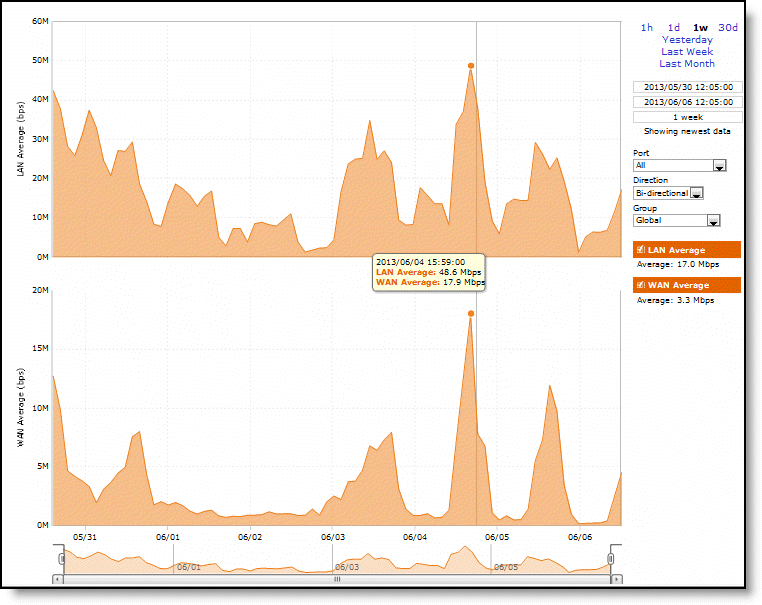About the Optimized Throughput report
The Optimized Throughput report is under Reports > Optimization: Optimized Throughput.
Optimized Throughput report

The Optimized Throughput report summarizes the throughput for the port, traffic direction, and time period specified. Time Interval, Port, Direction, and Group options are available to customize the report. Optimized LAN and WAN Link Throughput graphs include these statistics that describe data activity for the application and the time period you specify:
LAN Average (bps)
Displays the average throughput. RiOS calculates the LAN average at each data point by taking the number of bytes transferred, converting that to bits, and then dividing by the granularity. For instance, if the system reports 100 bytes for a data point with a 10-second granularity, RiOS calculates:
100 bytes * 8 bits/byte / 10 seconds = 80 bps
This means that 80 bps was the average throughput over that 10-second period. The average that appears below the LAN Average is an average of all displayed averages.
WAN Average (bps)
Displays the average throughput. RiOS calculates the WAN average at each data point by taking the number of bytes transferred, converting that to bits, and then dividing by the granularity. For instance, if the system reports 100 bytes for a data point with a 10-second granularity, RiOS calculates:
100 bytes * 8 bits/byte / 10 seconds = 80 bps
This means that 80 bps was the average throughput over that 10-second period. The average that appears below the WAN Average is an average of all displayed averages.
The navigator shadows the WAN Peak series.
The Optimized Throughput report answers these questions:
• What was the average WAN and LAN throughput?
• What was the peak WAN and LAN throughput?
The Optimized Throughput report displays these data granularities:
• Last 1 hour's worth of data is available at 10-second granularity.
• Last 1 day's worth of data is available at five-minute granularity.
• Last 1 week's worth of data is available at one-hour granularity.
• Last 1 month's worth of data is available at two-hour granularity.


